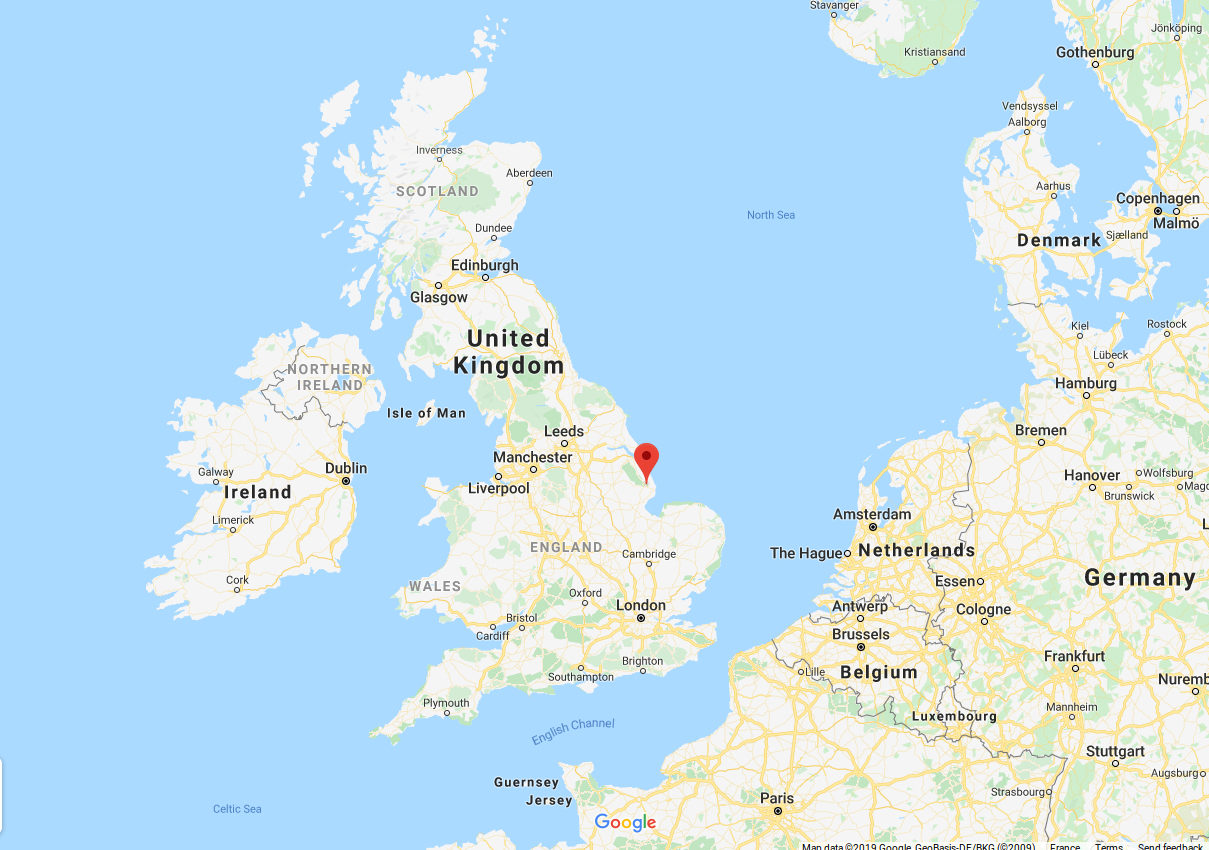Archaeologists have been left stunned by the findings - which include 50 graves containing human remains, jewellery and weaponry.
A team from Sheffield University, which led the excavations, made the astonishing discoveries at a sixth century Anglo-Saxon burial site in a field at Scremby, between Skegness and Spilsby.
The ancient cemetery was first discovered when a metal detectorist scanning the farmland uncovered Anglo-Saxon objects including iron shield bosses, copper guilded brooches and spear heads. Ploughing had damaged some of the graves before their existence was known - but many survived intact.
The excavations that followed have now unearthed 50 ancient graves - many representing what archaeologists call the 'lavish burials' of wealthy individuals at the time. Tragically, one woman buried at the site was found cradling the remains of a baby in her arms.
Archaeologists behind the latest dig, which took place this summer, are now in the process of cleaning and analysing their various finds. Items include human bones and teeth, jewellery such as intricate glass beads and brooches, weapons, and ornate pottery - including a well-preserved enamelled bowl.
The fully-preserved enamelled bowl unearthed at the Anglo-Saxon burial site at Scremby - is one of the most impressive finds.
Lead archaeologist Dr Hugh Willmott describes the bowl as 'a major find in its own right' - with the carefully cleaned-up object revealing 'stunning coloured enamels'.
Speaking to the Standard, he said: "We have a series of burials, 50 in total, what all include some form of grave goods. These can vary from just a single knife to hundreds of beads.

"Some of the most eye-catching are the beads which are made from coloured glasses, rock crystal and amber."
An ornate brooch recovered from one of the fifth century graves.
The human bone fragments and teeth have now been sent off for analysis using 'ancient DNA sequencing'.
This is the second dig at Scremby by the team, having begun early excavations at the site last year. During this time they found artefacts such as a metal boar's head with garnet eyes - which may have been the nose piece on a helmet - a 'rare' bird shield mount, a copper-alloy cup, and an animal-themed decorated belt fitting.
The findings from the first dig were featured in an episode of BBC's Digging for Britain last November. The latest finds are expected to be featured in an upcoming edition of the show's eighth series, to screened later this year.
Dr Willmott says they have now finished excavating the site, as there is 'nothing left' to find.
Writing about the dig, he added: "The preservation of the skeletal remains, as well as the many grave finds, provide an exciting opportunity to explore the social and cultural dynamics of the community who chose to bury their dead on this chalky outcrop."
Dr Hugh Willmott with 'Digging for Britain's Professor Alice Roberts. Image supplied. Some of the beads and a spindle whorl which were found at the burial site. The archaeology team carefully unearth an ancient knife (seax). A metal boar's head with garnet eyes - which may have been the nose piece on a helmet. This 'rare' bird shield mount was unearthed at the Scremby site.











Comment: It'll be interesting to see what the DNA results show because a recent study reports that Britain's Anglo-Saxon period was not the result of a takeover by a foreign overclass, as previously thought, but was instead a society that was the result of interaction and assimilation of a number of nearby countries. As detailed in: Time to axe the Anglo-Saxons? Rethinking the 'migration period', See also:
- 536 AD: Plague, famine, drought, cold, and a mysterious fog that lasted 18 months
- Prittlewell: Stunning artefacts discovered in Anglo-Saxon nobleman's burial chamber in Southend-on-Sea, England
- Viking city: Excavation reveals urban pioneers not violent raiders
- Student's gold pendant find is worth £145,000 and 'rewrites' Anglo Saxon history
- Oxford University genetic study finds Britons still live in 7th century tribal kingdoms
And check out SOTT radio's: Behind the Headlines: Who was Jesus? Examining the evidence that Christ may in fact have been Caesar!